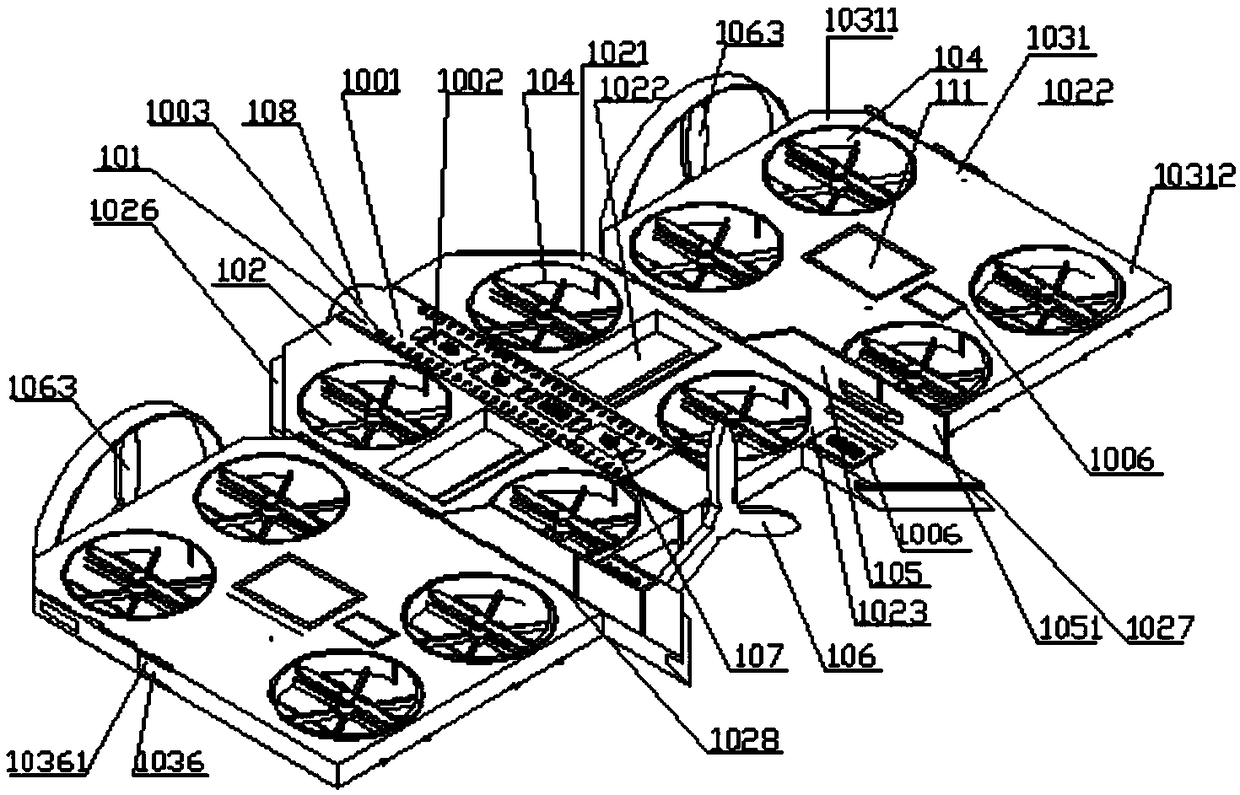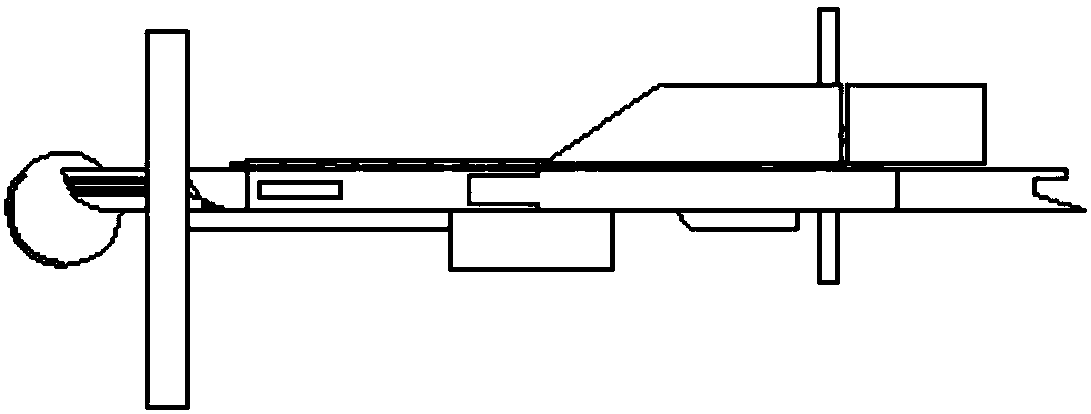Rear-single-propeller-type composite wing airplane with double-duct thrust composite auxiliary wings
A composite wing and thrust technology, applied in the field of aircraft, can solve the problems of low wing structure strength, slow horizontal flight speed, and unsatisfactory controllability, and achieves expansion of wing area, fast flight speed, and convenient cluster flight. Effect
- Summary
- Abstract
- Description
- Claims
- Application Information
AI Technical Summary
Problems solved by technology
Method used
Image
Examples
Embodiment Construction
[0035] The present invention will be further described below in conjunction with the accompanying drawings.
[0036] like Figure 1 to Figure 5 As shown, a rear single-screw compound wing aircraft with double ducted thrust compound ailerons is composed of a rear single propeller compound wing aircraft and ducted fan thrust self-powered compound ailerons assembled on both sides of its wing;
[0037] Wherein, the rear single propeller compound wing aircraft includes a body 101, a composite lift wing 102 and a propeller 106 fixedly installed on both sides of the body 101; wherein, the body 101 is set as a deck platform; the The compound lift wing 102 has a built-in self-enclosed ducted fan 104, and the outside of the compound lift wing 102 is designed with a wing hinge (1028);
[0038] The front end of the ducted fan thrust self-powered composite aileron is provided with a ducted fan propeller 1063, and the interior of the ducted fan thrust self-powered composite aileron is prov...
PUM
 Login to View More
Login to View More Abstract
Description
Claims
Application Information
 Login to View More
Login to View More - Generate Ideas
- Intellectual Property
- Life Sciences
- Materials
- Tech Scout
- Unparalleled Data Quality
- Higher Quality Content
- 60% Fewer Hallucinations
Browse by: Latest US Patents, China's latest patents, Technical Efficacy Thesaurus, Application Domain, Technology Topic, Popular Technical Reports.
© 2025 PatSnap. All rights reserved.Legal|Privacy policy|Modern Slavery Act Transparency Statement|Sitemap|About US| Contact US: help@patsnap.com



